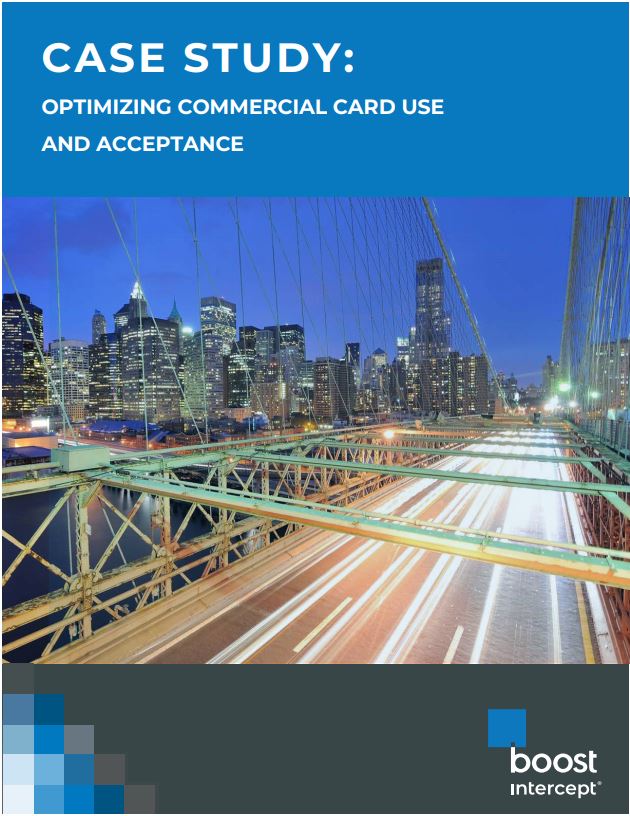Paying bills is a central part of life for consumers and businesses alike, but for businesses, the bill paying process can be extremely complicated, especially for larger companies that may process hundreds or even thousands of invoices a month.
One pain point for many suppliers is associating remittance data with the received payment for reconciliation purposes. “In most cases that data comes through a separate channel, such as a lockbox, e-mail, or file transfer, and is not contained in the payments message,” said Steve Murphy, director of Commercial and Enterprise Payments Advisory Service at Mercator Advisory Group.
He also noted how many buyers find it challenging to match invoices with purchase orders during the payment approval process.
Due to how complicated B2B payments can be for both buyers and suppliers, many companies are seeking innovation in the commercial payments space.
One area of promise is the use of commercial cards.
While most B2B transactions still occur by check, wire, or ACH, payments made via commercial cards are on the rise. By 2020, business expenditures on credit cards are expected to reach $15 trillion globally, representing about 12% of such payments, according to a case study published by Boost Payment Solutions.
Commercial cards can address many of the problems plaguing traditional B2B payment methods, while providing mission-critical solutions to those businesses receiving card payments.
How Boost helped a global financial institution
This use case centers on how Boost partnered with a global financial institution to solve problems plaguing its commercial card payments to its telecommunications provider.
When the FI started doing business with the telecom provider, it used commercial cards as its payment method; however, problems soon arose.
Specifically, there were reconciliation problems because the FI’s card-based remittance information was not being properly reported. This caused the FI to reach out to a card network for help. The network turned to Boost to solve the problem.
Within 90 days, Boost completed the implementation of a custom solution that met all the goals of the FI. Boost even managed to improve the telecom’s card acceptance program in a variety of ways.
The solution: Boost Intercept
To help the FI, Boost introduced its proprietary straight-through processed (STP) payment technology named Boost Intercept. The solution eliminated the need for human involvement in the payment and reconciliation processes. This led to 5 key benefits which are outlined below.
- Pricing: By using Boost Intercept, both the FI and the telecom were able to reduce back-office expenses since manual data entry was no longer needed. The telecom was also able to save money since Boost helped it “optimize its acceptance by qualifying all transactions at the most favorable commercial interchange rates.”
- Automation: As previously discussed, Boost Intercept transforms the credit card payments into an automated, direct deposit STP payment process. This solved the FI’s issues with remittance.
- Reporting: When the FI makes a payment, Boost Intercept captures the data and automatically repackages it to “flow seamlessly into the telecom’s ERP system to eliminate human intervention throughout the process.” Murphy explained how a solution such as this drastically reduces the amount of errors that occur when the process is done manually.
- Timing: Boost Intercept authorizes payments within seconds. This is a marked improvement over the time it takes for ACH transactions, checks and traditional card products to complete the payment.
- Security: Since all payments are “pushed” by the buyer to the supplier’s depository account, no card data or depository account information is used or stored by either the buyer or supplier. This significantly improves security since the risk for data breaches is virtually eliminated. Another perk is that the supplier (the telecom) does not need to worry about PCI DSS compliance since it is not storing the data and therefore out of PCI DSS scope.
The solution was so successful that the telecom has expanded and optimized its card acceptance program via Boost Intercept for hundreds of other clients as well. For its part, the FI now utilizes Boost Intercept to pay for thousands of wireless accounts and wireless devices around the globe.
To learn more about commercial card payments and Boost, you can read the white paper here.











